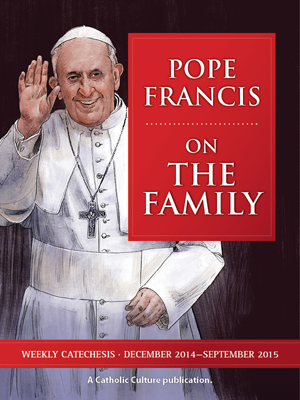Catholic World News News Feature
Toward the conclave #9: background of the cardinal-electors April 15, 2005
For generations, any analysis of a papal conclave began with a simple division, separating the Italian cardinals from those of other countries. For generations, Italian prelates had controlled the process, both because they dominated the College of Cardinals and because-- in the days before world travel and instant communication became routine-- they were better acquainted with each other and with the workings of the Holy See.
During the 20th century, however, the Italian influence gradually waned, as the College of Cardinals gained a more international flavor. Among the 115 cardinal-electors who will enter the conclave on April 18, only 20 are Italian. Europe is still heavily represented, with 58 electors; but there will also be 20 from Latin America, 14 from North America, 11 from Africa, 10 from Asia, and 2 from Australia and Oceania. Altogether, some 53 countries will be represented.
|
Even through most of the 20th century, Italian cardinals held an absolute voting majority, with 39 of 62 votes in the conclave of 1903, 34 of 57 in 1914, 31 of 54 in 1922, and 34 of 62 in 1939. Under Pope Pius XII the Italians lost their dominance, and there were only 17 Italians among the 55 electors who chose Pope John XXIII. From that point forward, the proportion of Italians has declined, while the non-European influence has risen.
Another striking change in the composition of the conclave is the number of cardinals with experience as diocesan leaders. Here too, the past century has seen a steady trend toward diocesan leaders, from various different countries, rather than veteran Vatican officials.
Of the 115 electors, 99 have served as diocesan bishops, and 77 are currently heading archdioceses. (There are 23 electors now serving in the Roman Curia, while the remaining 15 are retired.) Thus the electors with direct experience in handling diocesan affairs now constitute 87 percent of the conclave-- as against 76 percent in the two conclaves of 1978, and 68 percent in 1963.
While the conclave will probably lean toward a candidate who has experience as a diocesan leader, there is also reason to believe that the cardinals will look for someone with knowledge of the Roman Curia as well. During the past century, 6 of the 9 Roman Pontiffs had some experience as Curial officials. (Interestingly, however, 2 of the three exceptions-- John Paul I and John Paul II-- were the most recent Pontiffs, while the third-- Pius X-- is a canonized saint.) Only one Pope of the past century, Pius XII, had never been a diocesan bishop.
Among the cardinals entering the conclave, 11 are officials of the Roman Curia who previously served as diocesan leaders: Cardinals Arinze, Castrillon Hoyos, Daoud, Hamao, Kasper, Lopez Trujillo, Lozano Barragan, Poupard, Ratzinger, Stafford, Szoka, and Runi. Another 6 are now diocesan bishops, but once worked within the Curia: Cardinals Agnelo, Backis, Bertone, Dias, Egan, and Rigali.
Roughly one-sixth of the electors are members of religious orders, with 4 Franciscans, 3 Salesians, 2 Redemptorists, and 2 Jesuits; there are also 2 members of Opus Dei. No member of any religious order has been elected Pope since Gregory XVI in 1831.







